A Novel Machine Learning-Based Price Forecasting for Energy Management Systems
Abstract
:1. Introduction
- NEPRA, Pakistan data are considered where the PF is optimized by reducing the MAPE.
- Eight time-series and autoregression algorithms are developed to fetch the dataset and set the objective function, while the proposed equations set the basis for further validation as improved results validate it.
- However, feedforward ANFIS based on the ML approach is proposed. Best-feature selection is evaluated through the BGA-PCA approach.
- Our results for the PF compute the MAPE of one year by the proposed integration strategy, and the overall improvement in MAPE is 9.24%.
- In the end, EMS based on the Firefly algorithm (FA) has been implemented, and the cost of electricity has been reduced by 21%, 19%, and 20% for building 1, 2, and 3, respectively, which is valuable in price forecasting of the energy management system (EMS).
2. Related Work
3. Proposed Framework for Price Forecasting
3.1. Time Series and Autoregression Method
3.2. Machine Learning Approach of Proposed Feedforward ANFIS
3.3. BGA-PCA for Feature Selection
3.4. Proposed Integration Strategy
4. PF Model Evaluation
| Customer Type | Without Proposed Integration M1 MAPE Percentage | With Proposed Integration M2 MAPE Percentage | With Proposed Integration & BGA-PCA Feature Selection M3 MAPE Percentage | Percentage Overall Improvement |
|---|---|---|---|---|
| Each Month MAPE % | Each Month MAPE % | Each Month MAPE % | Each Month Improvement % | |
| July 2019 | 6.61 | 6.12 | 5.56 | 9.15% |
| August 2019 | 7.42 | 6.87 | 6.26 | 8.88% |
| September 2019 | 5.51 | 5.10 | 4.61 | 9.61% |
| October 2019 | 5.81 | 5.38 | 4.87 | 9.48% |
| November 2019 | 5.89 | 5.46 | 4.94 | 9.52% |
| December 2019 | 5.87 | 5.44 | 4.92 | 9.56% |
| January 2020 | 5.66 | 5.24 | 4.74 | 9.54% |
| February 2020 | 7.28 | 6.74 | 6.14 | 8.90% |
| March 2020 | 7.43 | 6.88 | 6.27 | 8.87% |
| April 2020 | 5.35 | 4.95 | 4.47 | 9.70% |
| May 2020 | 7.49 | 6.93 | 6.32 | 8.80% |
| June 2020 | 7.59 | 7.03 | 6.41 | 8.82% |
| Average | 9.24% | |||
5. EMS Model Evaluation
- First it captures the on-time of each appliance after initialization.
- The duration of the run-time of every appliance is the load duration.
- Load power rating is also used as input in vector form.
- Cost of electricity so that a per-month bill can be calculated. This cost varies from country to country.
- Peak hour details are also necessary. This is because peak hour cost affects three-phase connection customers, not single-phase connection customers in Pakistan. However, still, it is required because most of the users are three-phase connection customers and load on the national power grid is high at peak hours.
- All the above parameters are used as input for the FA. These variables are modeled based on model equations presented in Section 5.
- Next, the output of the firefly block is generated. It is useless until it is proven fruitful. So to create a closed-loop system, unscheduled load parameters are generated.
- Unscheduled load, cost, and peak values are calculated. These values are now compared with the firefly block if these values have two properties.
- Firefly Load Peak < Unscheduled Load Peak.
- Firefly Load Bill < Unscheduled Load Bill.
- Then, the proposed scheduling DSM is correct. If not, then the Firefly bock is again called back to recalculate parameters and reschedule the load.
- If (9) is satisfied, then the output is generated. This output contains DSM data that can be used to reduce electricity bills and power peaks in demand.
5.1. Methodology
Firefly Algorithm
- At the same time, the firefly is attracted to the most attractive FA.
- In the second step, the attraction is proportional to the flashing light.
- In the last step, the coefficient value is used to control the intensity of the light.
6. Results Discussion
7. Results of Energy Management System
7.1. Tariff Plan
7.2. Load Management
7.3. Per Day Electricity Bill
8. Conclusions and Future Studies
Author Contributions
Funding
Institutional Review Board Statement
Informed Consent Statement
Data Availability Statement
Acknowledgments
Conflicts of Interest
References
- Stone, P.; Brooks, R.; Brynjolfsson, E.; Calo, R.; Etzioni, O.; Hager, G.; Hirschberg, J.; Kalyanakrishnan, S.; Kamar, E.; Kraus, S.; et al. Artificial Intelligence and Life in 2030: The One Hundred Year Study on Artificial Intelligence; Stanford University: Stanford, CA, USA, 2016. [Google Scholar]
- Macedo, M.; Galo, J.; de Almeida, L.; Lima, A.D.C. Demand side management using artificial neural networks in a smart grid environment. Renew. Sustain. Energy Rev. 2015, 41, 128–133. [Google Scholar] [CrossRef]
- Ahmad, A.; Khan, A.; Javaid, N.; Hussain, H.M.; Abdul, W.; Almogren, A.; Alamri, A.; Niaz, I.A. An Optimized Home Energy Management System with Integrated Renewable Energy and Storage Resources. Energies 2017, 10, 549. [Google Scholar] [CrossRef] [Green Version]
- Logenthiran, T.; Srinivasan, D.; Shun, T.Z. Demand Side Management in Smart Grid Using Heuristic Optimization. IEEE Trans. Smart Grid 2012, 3, 1244–1252. [Google Scholar] [CrossRef]
- Khan, M.A.; Javaid, N.; Mahmood, A.; Khan, Z.A.; Alrajeh, N. A generic demand-side management model for smart grid. Int. J. Energy Res. 2015, 39, 954–964. [Google Scholar] [CrossRef]
- Moon, S.; Lee, J.-W. Multi-Residential Demand Response Scheduling with Multi-Class Appliances in Smart Grid. IEEE Trans. Smart Grid 2016, 9, 2518–2528. [Google Scholar] [CrossRef]
- Remani, T.; Jasmin, E.A.; Ahamed, T.I. Residential Load Scheduling with Renewable Generation in the Smart Grid: A Reinforcement Learning Approach. IEEE Syst. J. 2018, 13, 3283–3294. [Google Scholar] [CrossRef]
- Masood, B.; Khan, M.A.; Baig, S.; Song, G.; Rehman, A.U.; Rehman, S.U.; Asif, R.M.; Rasheed, M.B. Investigation of Deterministic, Statistical and Parametric NB-PLC Channel Modeling Techniques for Advanced Metering Infrastructure. Energies 2020, 13, 3098. [Google Scholar] [CrossRef]
- Liu, D.; Xiao, J.; Liu, J.; Yuan, X.; Zhang, S. Dynamic Energy Trading and Load Scheduling Algorithm for the End-User in Smart Grid. IEEE Access 2020, 8, 189632–189645. [Google Scholar] [CrossRef]
- Siddique, M.A.B.; Asad, A.; Asif, R.M.; Rehman, A.U.; Sadiq, M.T.; Ullah, I. Implementation of Incremental Conductance MPPT Algorithm with Integral Regulator by Using Boost Converter in Grid-Connected PV Array. IETE J. Res. 2021, 1–14. [Google Scholar] [CrossRef]
- Mahmood, T.; Ullah, K.; Khan, Q.; Jan, N. An approach toward decision-making and medical diagnosis problems using the concept of spherical fuzzy sets. Neural Comput. Appl. 2018, 31, 7041–7053. [Google Scholar] [CrossRef]
- Costanzo, G.T.; Zhu, G.; Anjos, M.F.; Savard, G. A System Architecture for Autonomous Demand Side Load Management in Smart Buildings. IEEE Trans. Smart Grid 2012, 3, 2157–2165. [Google Scholar] [CrossRef]
- Long, K.; Yang, Z. Model predictive control for household energy management based on individual habit. In Proceedings of the 2013 25th Chinese Control and Decision Conference (CCDC), Guiyang, China, 25–27 May 2013; pp. 3676–3681. [Google Scholar]
- Stavrakas, V.; Flamos, A. A modular high-resolution demand-side management model to quantify benefits of demand-flexibility in the residential sector. Energy Convers. Manag. 2019, 205, 112339. [Google Scholar] [CrossRef]
- Yoon, J.H.; Baldick, R.; Novoselac, A. Dynamic Demand Response Controller Based on Real-Time Retail Price for Residential Buildings. IEEE Trans. Smart Grid 2014, 5, 121–129. [Google Scholar] [CrossRef]
- Agarwal, A.; Ojha, A.; Tewari, S.C.; Tripathi, M.M. Hourly load and price forecasting using ANN and fourier analysis. In Proceedings of the 2014 6th IEEE Power India International Conference (PIICON), Delhi, India, 5–7 December 2014; pp. 1–6. [Google Scholar]
- Rehman, A.U.; Naqvi, R.A.; Rehman, A.; Paul, A.; Sadiq, M.T.; Hussain, D. A Trustworthy SIoT Aware Mechanism as an Enabler for Citizen Services in Smart Cities. Electronics 2020, 9, 918. [Google Scholar] [CrossRef]
- Jahangir, H.; Tayarani, H.; Baghali, S.; Ahmadian, A.; Elkamel, A.; Golkar, M.A.; Castilla, M. A Novel Electricity Price Forecasting Approach Based on Dimension Reduction Strategy and Rough Artificial Neural Networks. IEEE Trans. Ind. Inform. 2019, 16, 2369–2381. [Google Scholar] [CrossRef]
- Siddique, M.A.B.; Khan, M.A.; Asad, A.; Rehman, A.U.; Asif, R.M.; Rehman, S.U. Maximum Power Point Tracking with Modified Incremental Conductance Technique in Grid-Connected PV Array. In Proceedings of the 2020 5th International Conference on Innovative Technologies in Intelligent Systems and Industrial Applications (CITISIA), Sydney, Australia, 25–27 November 2020; pp. 1–6. [Google Scholar]
- Kristiansen, T. Forecasting Nord Pool day-ahead prices with an autoregressive model. Energy Policy 2012, 49, 328–332. [Google Scholar] [CrossRef]
- Abedinia, O.; Amjady, N.; Zareipour, H. A New Feature Selection Technique for Load and Price Forecast of Electrical Power Systems. IEEE Trans. Power Syst. 2016, 32, 62–74. [Google Scholar] [CrossRef]
- Alanis, A.Y. Electricity Prices Forecasting Using Artificial Neural Networks. IEEE Lat. Am. Trans. 2018, 16, 105–111. [Google Scholar] [CrossRef]
- Al-Awami, A.T.; Amleh, N.A.; Muqbel, A.M. Optimal Demand Response Bidding and Pricing Mechanism With Fuzzy Optimization: Application for a Virtual Power Plant. IEEE Trans. Ind. Appl. 2017, 53, 5051–5061. [Google Scholar] [CrossRef]
- Elattar, E.E.; Elsayed, S.K.; Farrag, T.A. Hybrid Local General Regression Neural Network and Harmony Search Algorithm for Electricity Price Forecasting. IEEE Access 2020, 9, 2044–2054. [Google Scholar] [CrossRef]
- Mosbah, H.; El-Hawary, M. Hourly Electricity Price Forecasting for the Next Month Using Multilayer Neural Network. Can. J. Electr. Comput. Eng. 2016, 39, 283–291. [Google Scholar] [CrossRef]
- Asif, R.M.; Rehman, A.U.; Rehman, S.U.; Arshad, J.; Hamid, J.; Sadiq, M.T.; Tahir, S. Design and analysis of robust fuzzy logic maximum power point tracking based isolated photovoltaic energy system. Eng. Rep. 2020, 2, e12234. [Google Scholar] [CrossRef]
- Schnürch, S.; Wagner, A. Electricity Price Forecasting with Neural Networks on EPEX Order Books. Appl. Math. Financ. 2020, 27, 189–206. [Google Scholar] [CrossRef]
- Usman, M.; Khan, Z.A.; Khan, I.U.; Javaid, S.; Javaid, N. Data Analytics for Short Term Price and Load Forecasting in Smart Grids using Enhanced Recurrent Neural Network. In Proceedings of the 2019 Sixth HCT Information Technology Trends (ITT), Ras Al Khaimah, United Arab Emirates, 20–21 November 2019; pp. 84–88. [Google Scholar]
- Lee, D.; Shin, H.; Baldick, R. Bivariate Probabilistic Wind Power and Real-Time Price Forecasting and Their Applications to Wind Power Bidding Strategy Development. IEEE Trans. Power Syst. 2018, 33, 6087–6097. [Google Scholar] [CrossRef]
- Sahay, K.B.; Tripathi, M.M. Day ahead hourly load forecast of PJM electricity market and ISO New England market by using artificial neural network. In Proceedings of the 2013 IEEE Innovative Smart Grid Technologies-Asia (ISGT Asia), Washington, DC, USA, 19–22 February 2014; pp. 1–5. [Google Scholar]
- Upadhyay, K.; Tripathi, M.; Singh, S. An approach to short term load forecasting using market price signal. In Proceedings of the 19th International Conference on Electricity Distribution, Vienna, Austria, 21–24 May 2007. [Google Scholar]
- Cau, G.; Cocco, D.; Petrollese, M.; Kær, S.K.; Milan, C. Energy management strategy based on short-term generation scheduling for a renewable microgrid using a hydrogen storage system. Energy Convers. Manag. 2014, 87, 820–831. [Google Scholar] [CrossRef]
- Lv, T.; Ai, Q. Interactive energy management of networked microgrids-based active distribution system considering large-scale integration of renewable energy resources. Appl. Energy 2016, 163, 408–422. [Google Scholar] [CrossRef]
- Shewale, A.; Mokhade, A.; Funde, N.; Bokde, N.D. An Overview of Demand Response in Smart Grid and Optimization Techniques for Efficient Residential Appliance Scheduling Problem. Energies 2020, 13, 4266. [Google Scholar] [CrossRef]
- Zhao, B.; Xue, M.; Zhang, X.; Wang, C.; Zhao, J. An MAS based energy management system for a stand-alone microgrid at high altitude. Appl. Energy 2015, 143, 251–261. [Google Scholar] [CrossRef] [Green Version]
- Xiao, J.; Wang, P.; Setyawan, L.; Xu, Q. Multi-Level Energy Management System for Real-Time Scheduling of DC Microgrids with Multiple Slack Terminals. IEEE Trans. Energy Convers. 2015, 31, 392–400. [Google Scholar] [CrossRef]
- Farzan, F.; Jafari, M.A.; Masiello, R.; Lu, Y. Toward Optimal Day-Ahead Scheduling and Operation Control of Microgrids Under Uncertainty. IEEE Trans. Smart Grid 2014, 6, 499–507. [Google Scholar] [CrossRef]
- Rehman, A.U.; Aslam, S.; Abideen, Z.U.; Zahra, A.; Ali, W.; Junaid, M.; Javaid, N. Efficient Energy Management System Using Firefly and Harmony Search Algorithm. In International Conference on Broadband and Wireless Computing, Communication and Applications, Spain, 8–10 November 2017; Springer: Cham, Switzerland, 2017; pp. 37–49. [Google Scholar] [CrossRef]
- Saba, A.; Khalid, A.; Ishaq, A.; Parvez, K.; Aimal, S.; Ali, W.; Javaid, N. Home Energy Management Using Firefly and Harmony Search Algorithm. In Proceedings of the 12th International Conference on P2P, Parallel, Grid, Cloud and Internet Computing, Barcelona, Spain, 8–10 November 2017. [Google Scholar]
- Oladeji, O.; Olakanmi, O.O. A genetic algorithm approach to energy consumption scheduling under demand response. In Proceedings of the 2014 IEEE 6th International Conference on Adaptive Science & Technology (ICAST), Ota, Nigeria, 29–31 October 2014. [Google Scholar] [CrossRef]
- Asgher, U.; Rasheed, M.B.; Al-Sumaiti, A.S.; Ur-Rahman, A.; Ali, I.; Alzaidi, A.; Alamri, A. Smart Energy Optimization Using Heuristic Algorithm in Smart Grid with Integration of Solar Energy Sources. Energies 2018, 11, 3494. [Google Scholar] [CrossRef] [Green Version]
- Latifi, M.; Khalili, A.; Rastegarnia, A.; Zandi, S.; Bazzi, W. A distributed algorithm for demand-side management: Selling back to the grid. Heliyon 2017, 3, e00457. [Google Scholar] [CrossRef]
- Ahmed, A.; Manzoor, A.; Khan, A.; Zeb, A.; Madni, H.A.; Qasim, U.; Khan, Z.A.; Javaid, N. Performance Measurement of Energy Management Controller Using Heuristic Techniques. In Complex, Intelligent, and Software Intensive Systems, Proceedings of the Conference on Complex, Intelligent, and Software Intensive Systems, Turin, Italy, 10–13 July 2017; Springer: Cham, Switzerland, 2017; Volume 611, pp. 181–188. [Google Scholar] [CrossRef]
- Kilimci, Z.H.; Akyuz, A.O.; Uysal, M.O.; Akyokus, S.; Bulbul, B.A.; Ekmis, M.A. An Improved Demand Forecasting Model Using Deep Learning Approach and Proposed Decision Integration Strategy for Supply Chain. Complexity 2019, 2019, 9067367. [Google Scholar] [CrossRef] [Green Version]
- Jadidi, A.; Menezes, R.; De Souza, N.; Lima, A.C.D.C.; Souza, D.; Lima, D.C. Short-Term Electric Power Demand Forecasting Using NSGA II-ANFIS Model. Energies 2019, 12, 1891. [Google Scholar] [CrossRef] [Green Version]
- Yousaf, A.; Asif, R.; Shakir, M.; Rehman, A.; Adrees, M.S. An Improved Residential Electricity Load Forecasting Using a Machine-Learning-Based Feature Selection Approach and a Proposed Integration Strategy. Sustainability 2021, 13, 6199. [Google Scholar] [CrossRef]
- Bayat, P.; Monjezi, M.; Rezakhah, M.; Armaghani, D.J. Artificial Neural Network and Firefly Algorithm for Estimation and Minimization of Ground Vibration Induced by Blasting in a Mine. Nat. Resour. Res. 2020, 29, 4121–4132. [Google Scholar] [CrossRef]
- Yang, X.S.; He, X. Firefly algorithm: Recent advances and applications. Int. J. Swarm Intell. 2013, 1, 36–50. [Google Scholar] [CrossRef] [Green Version]
- Yang, X.S. Firefly algorithms for multimodal optimization. In Proceedings of the Lecture Notes in Computer Science (Including Subseries Lecture Notes in Artificial Intelligence and Lecture Notes in Bioinformatics), Suzhou, China, 2–4 April 2009; Volume 5792 LNCS, pp. 169–178. [Google Scholar]
- Zhang, L.; Liu, L.; Yang, X.-S.; Dai, Y. A Novel Hybrid Firefly Algorithm for Global Optimization. PLoS ONE 2016, 11, e0163230. [Google Scholar] [CrossRef] [Green Version]
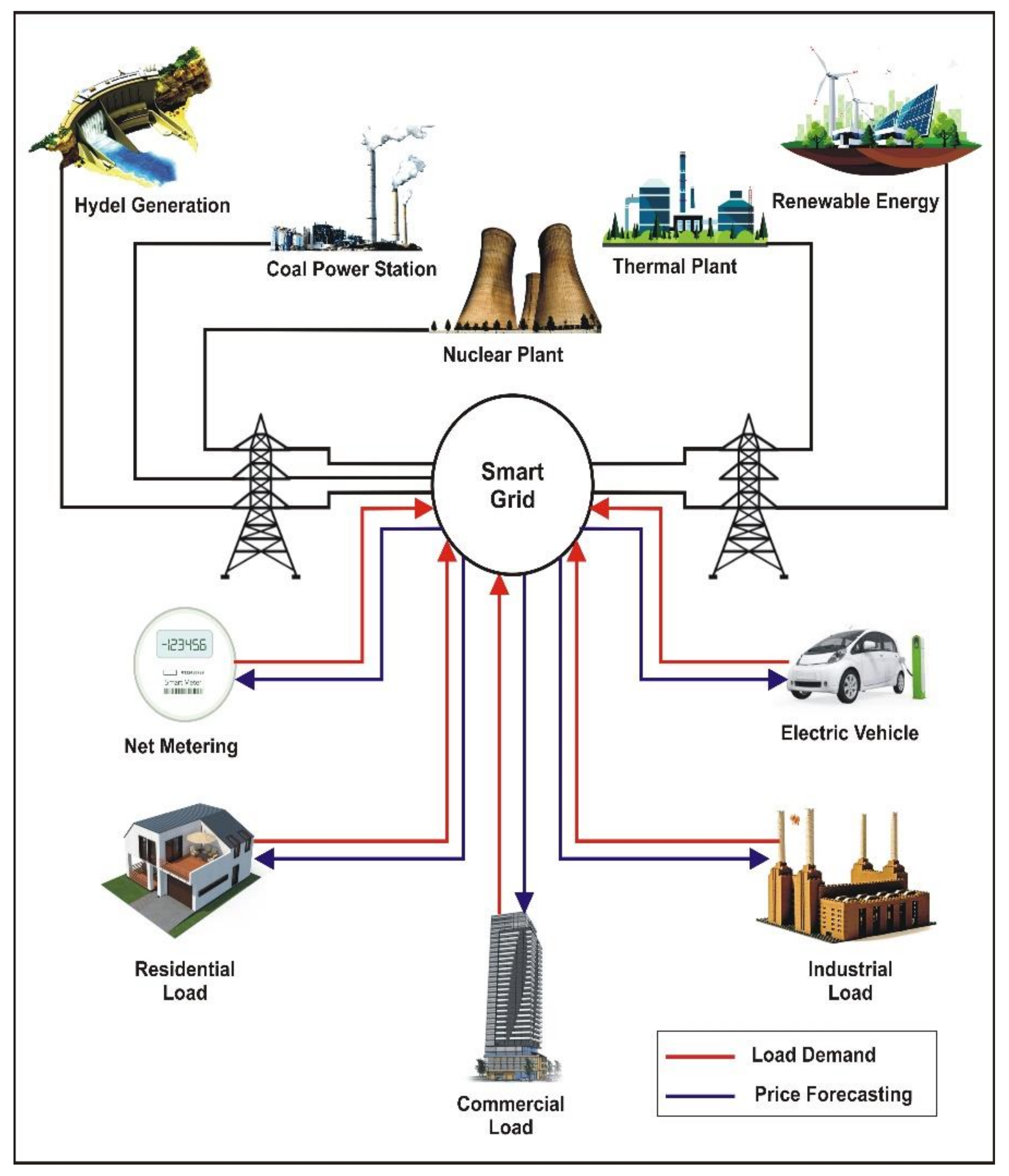

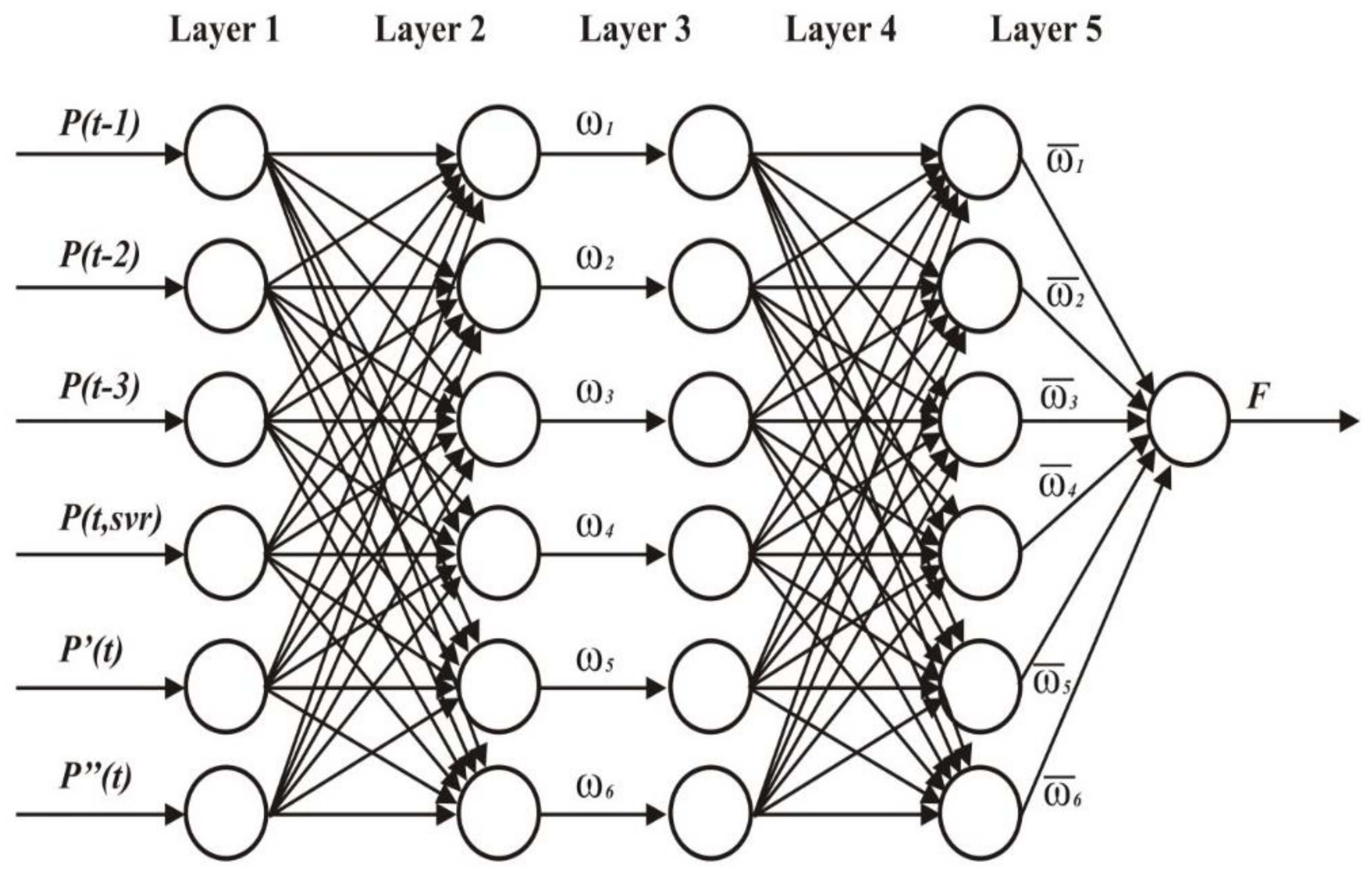
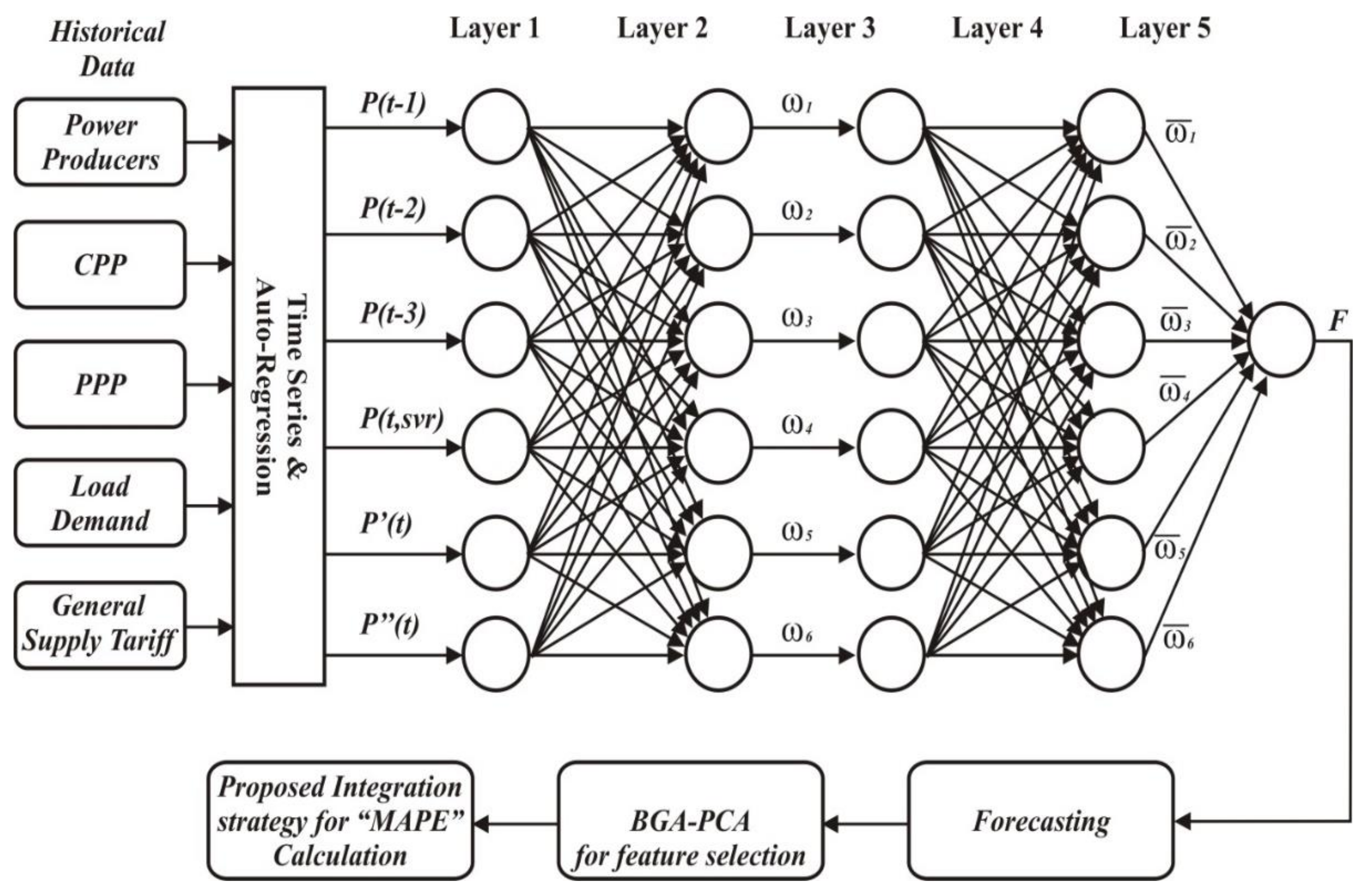
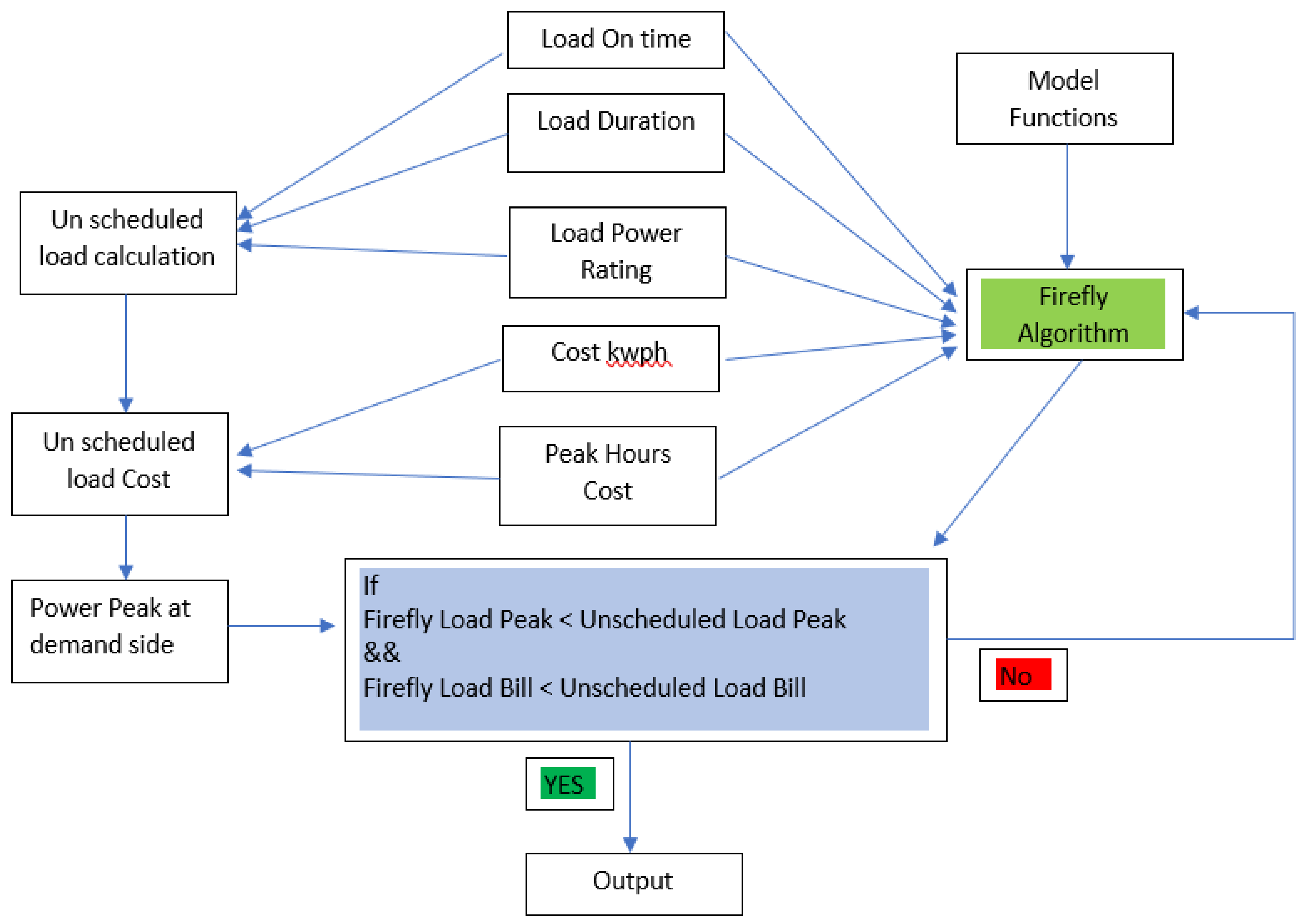
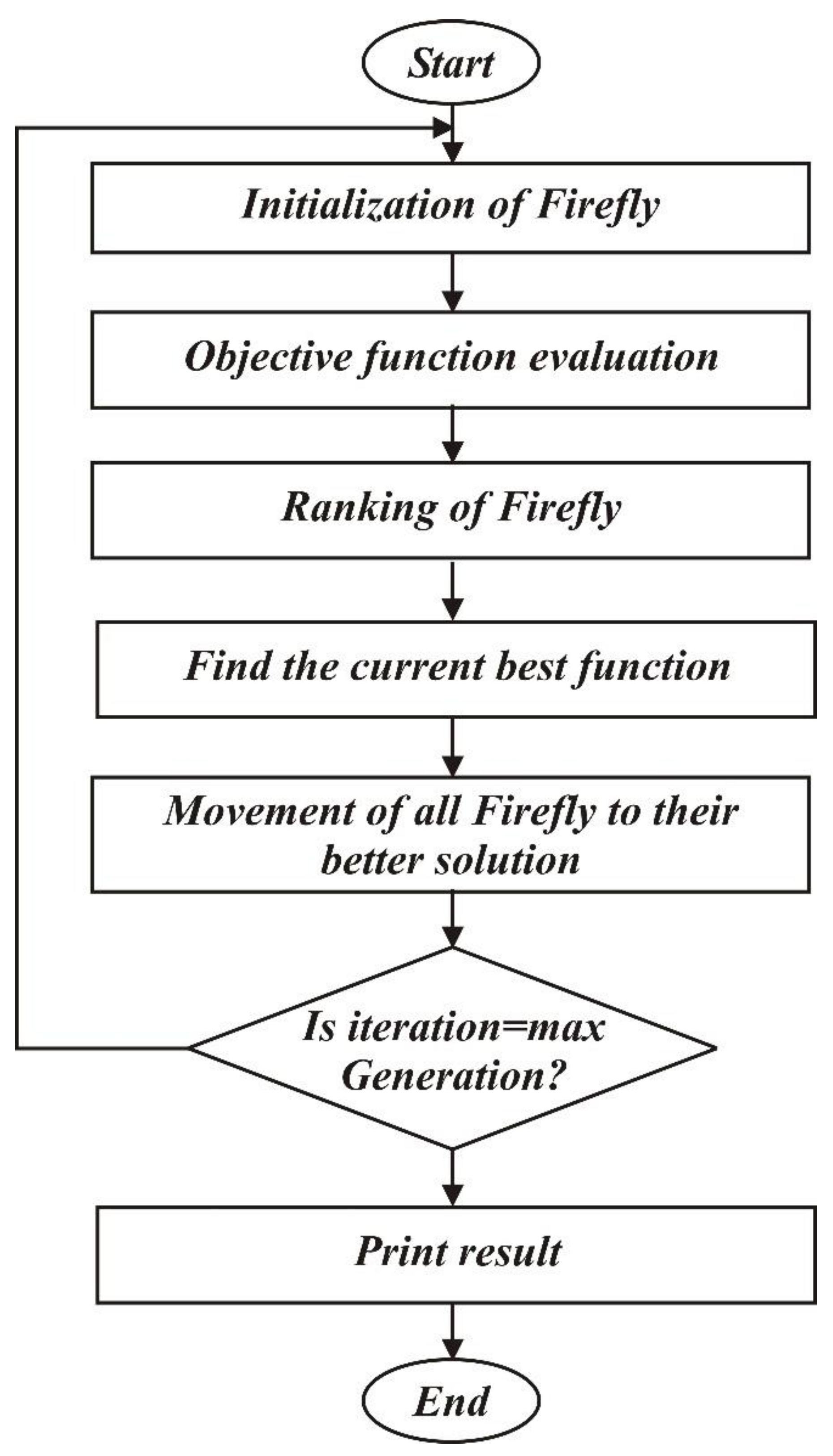
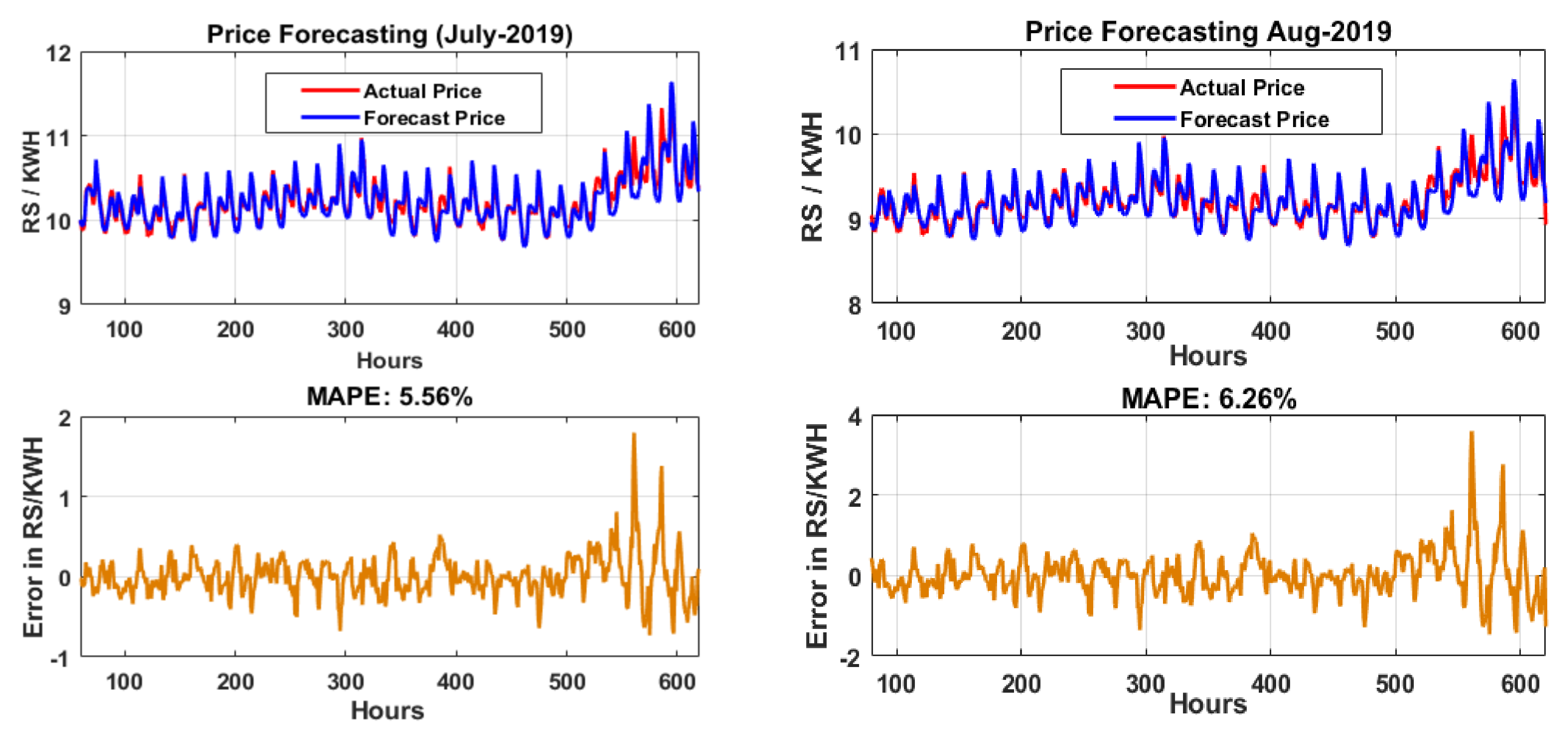
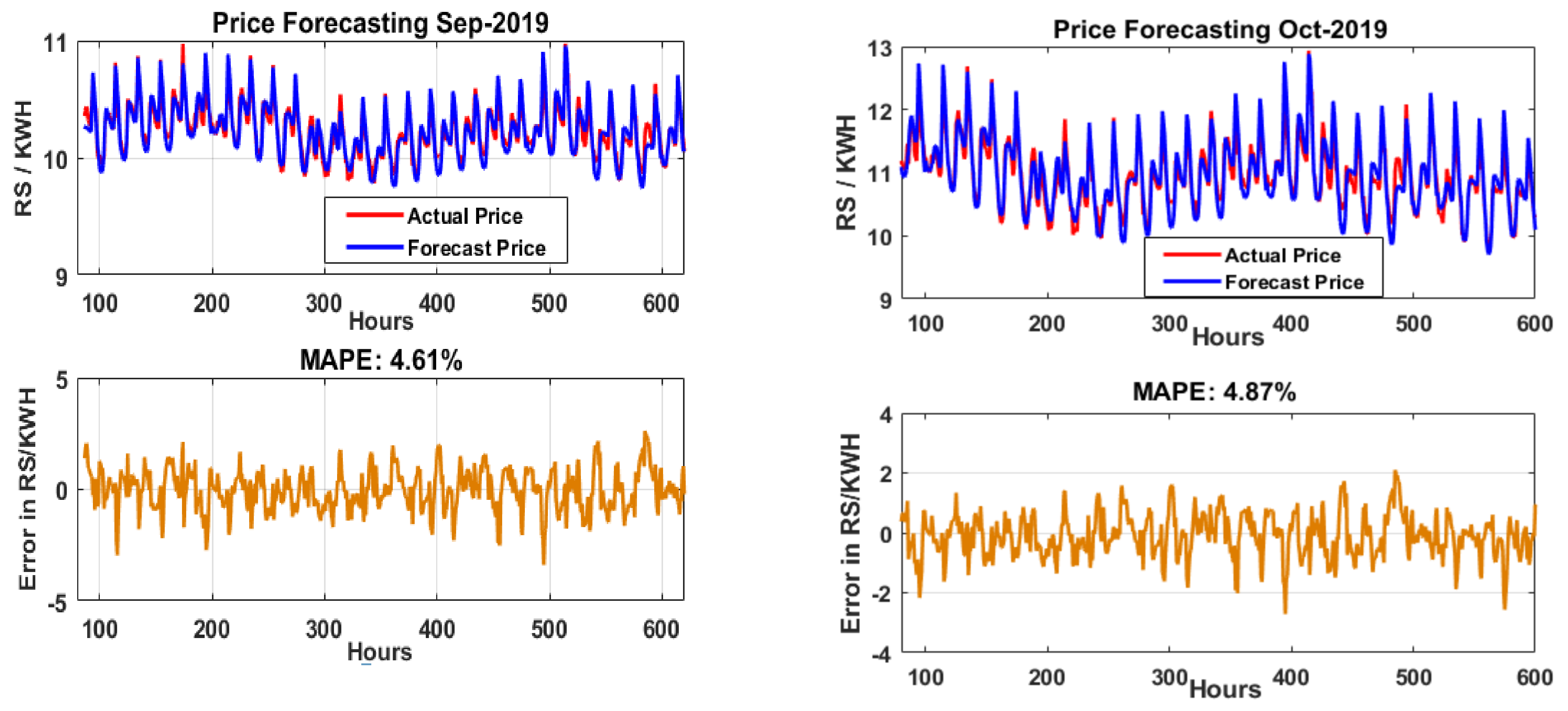
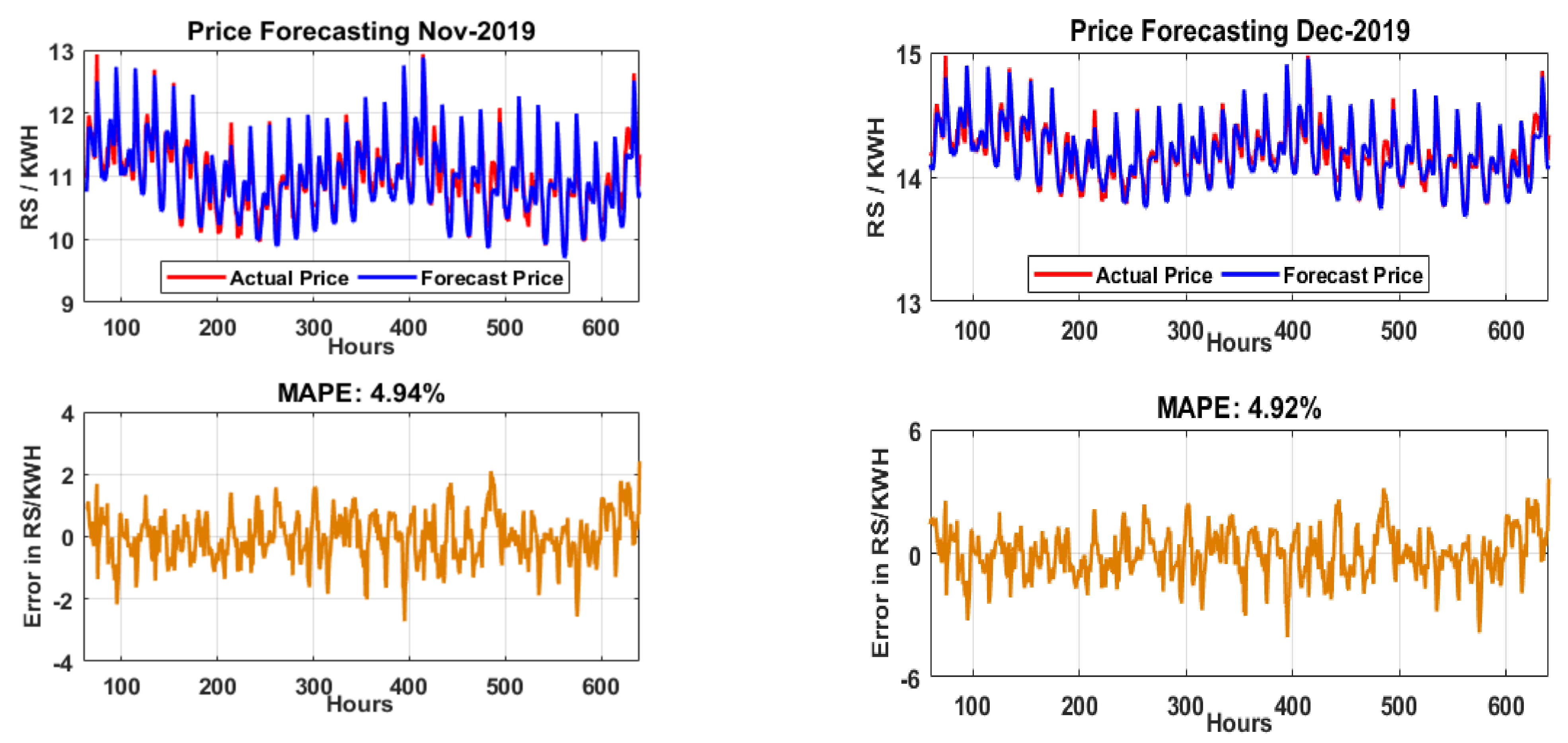
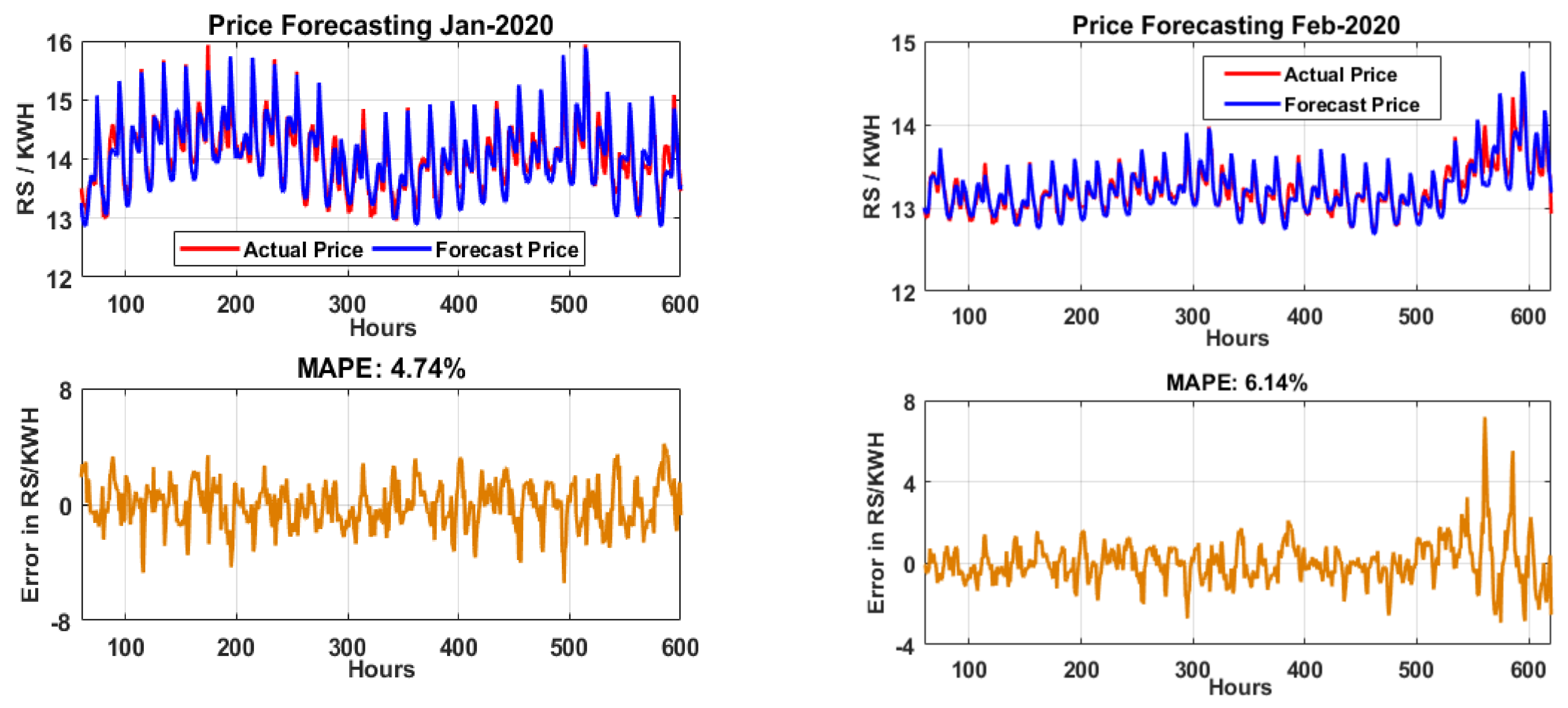
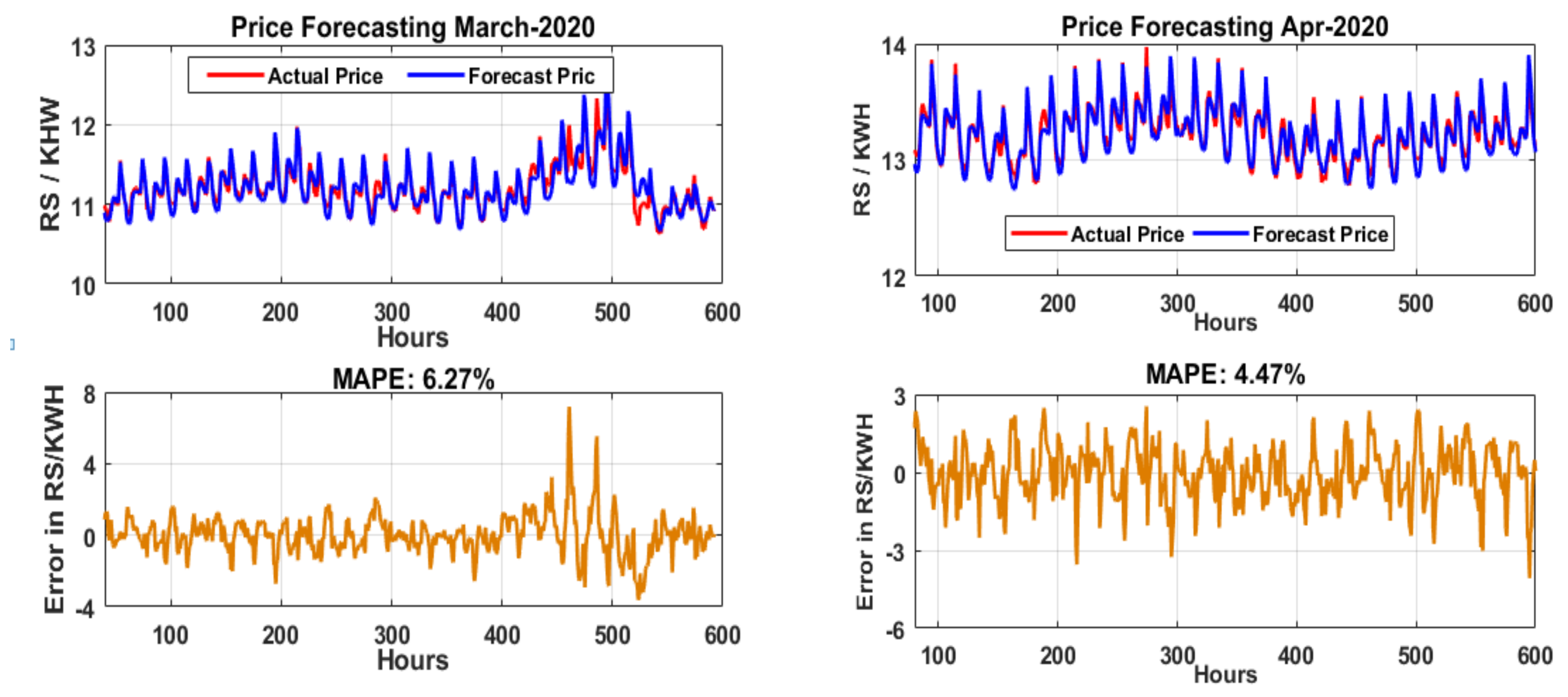
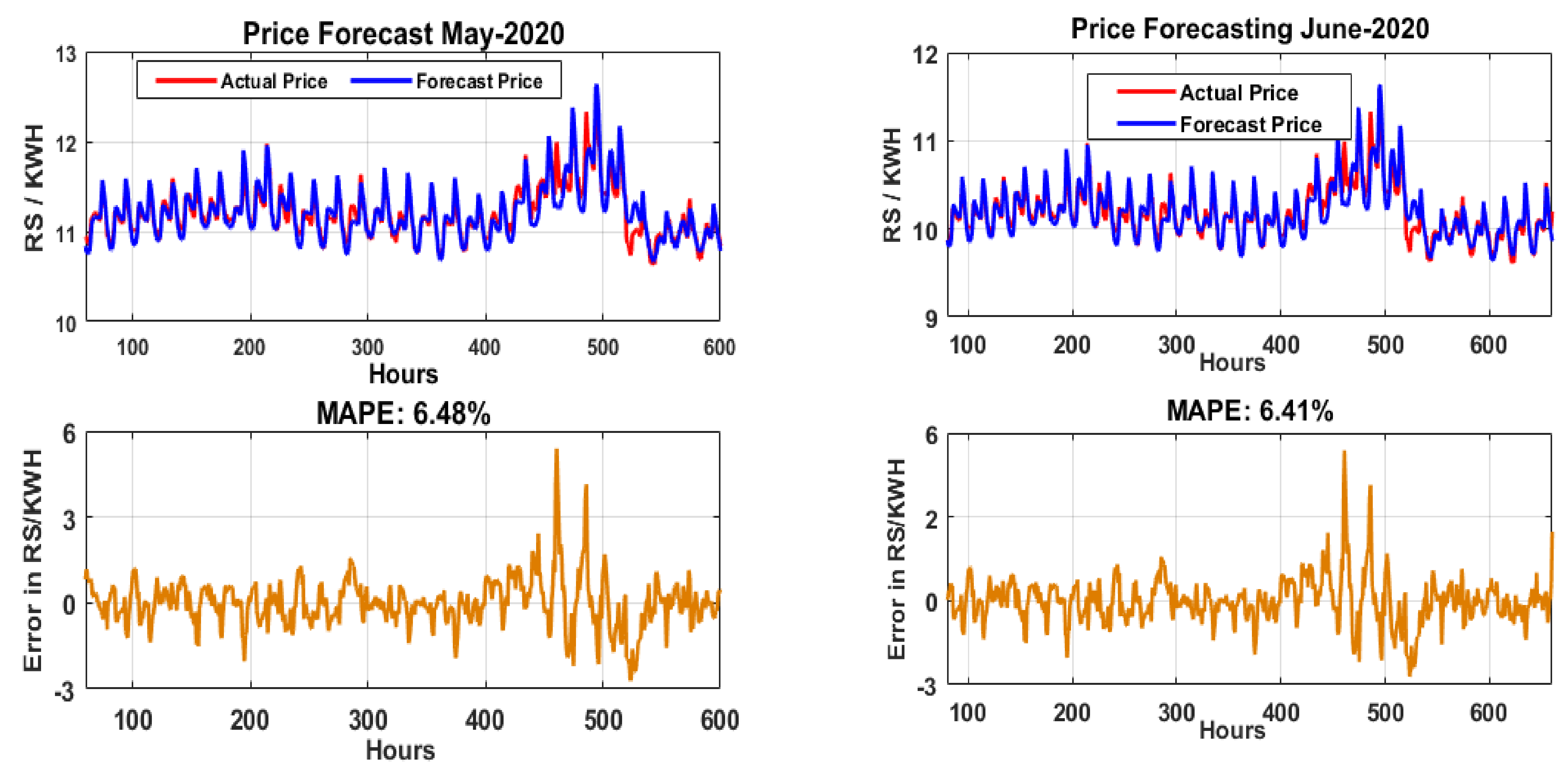
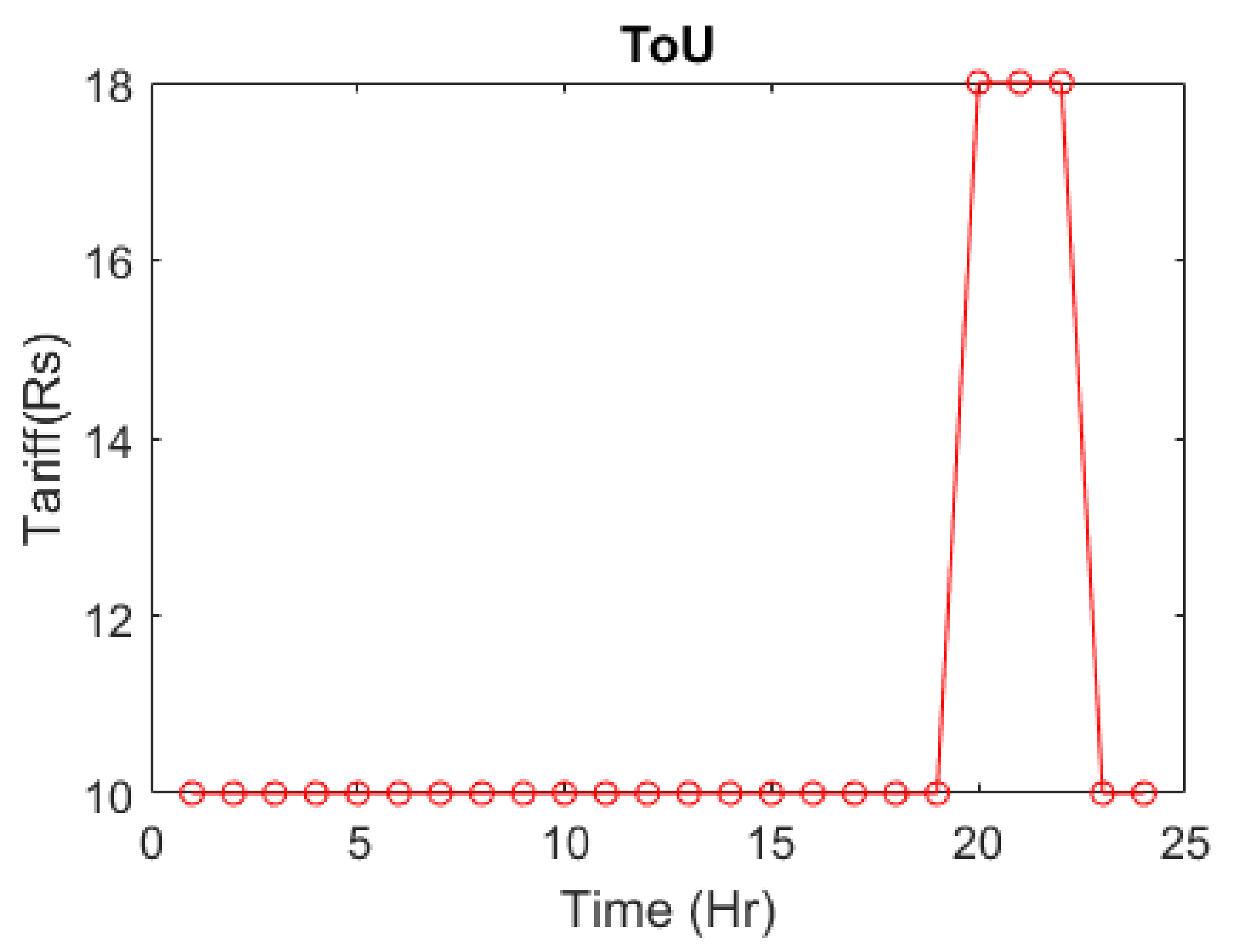
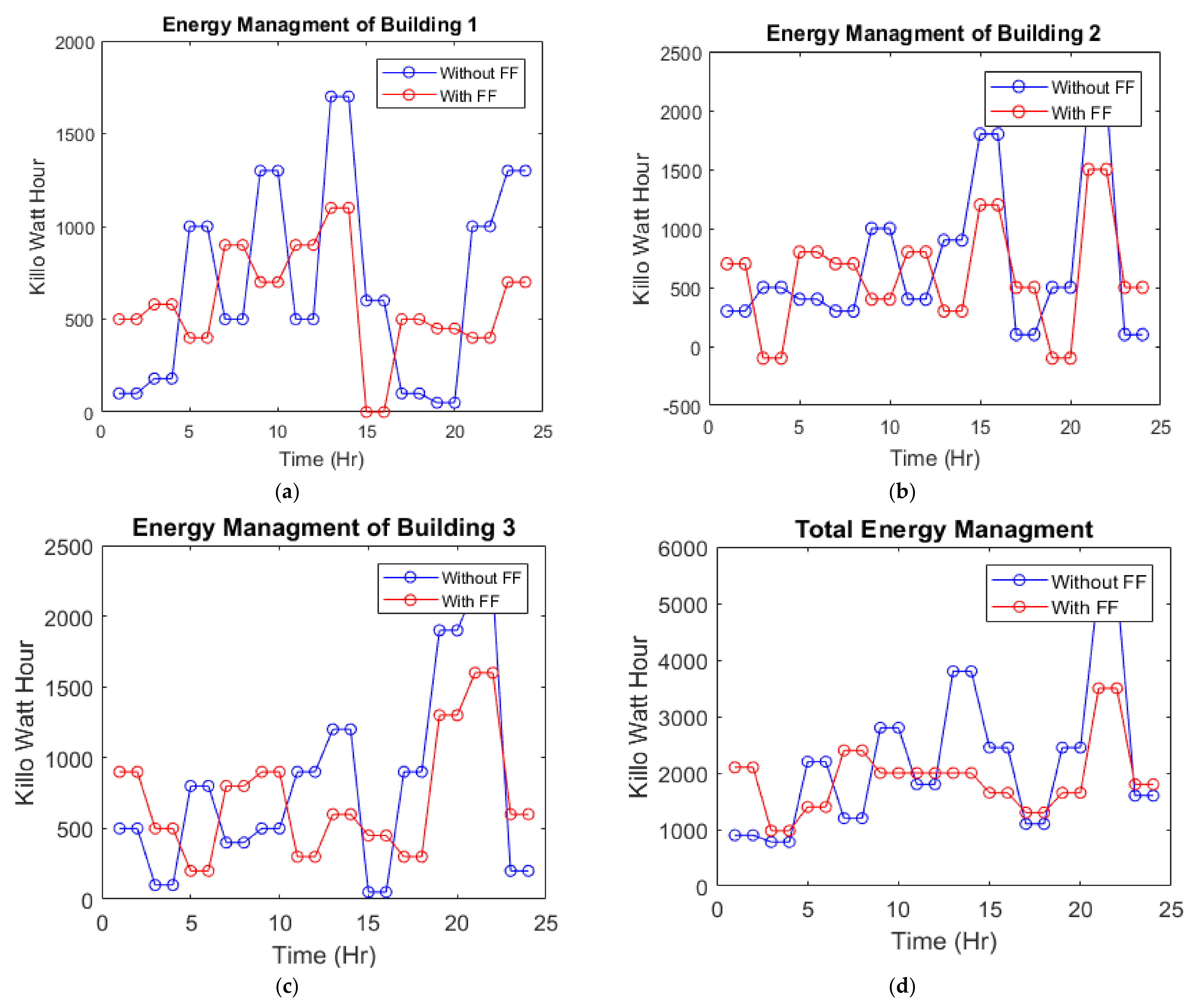
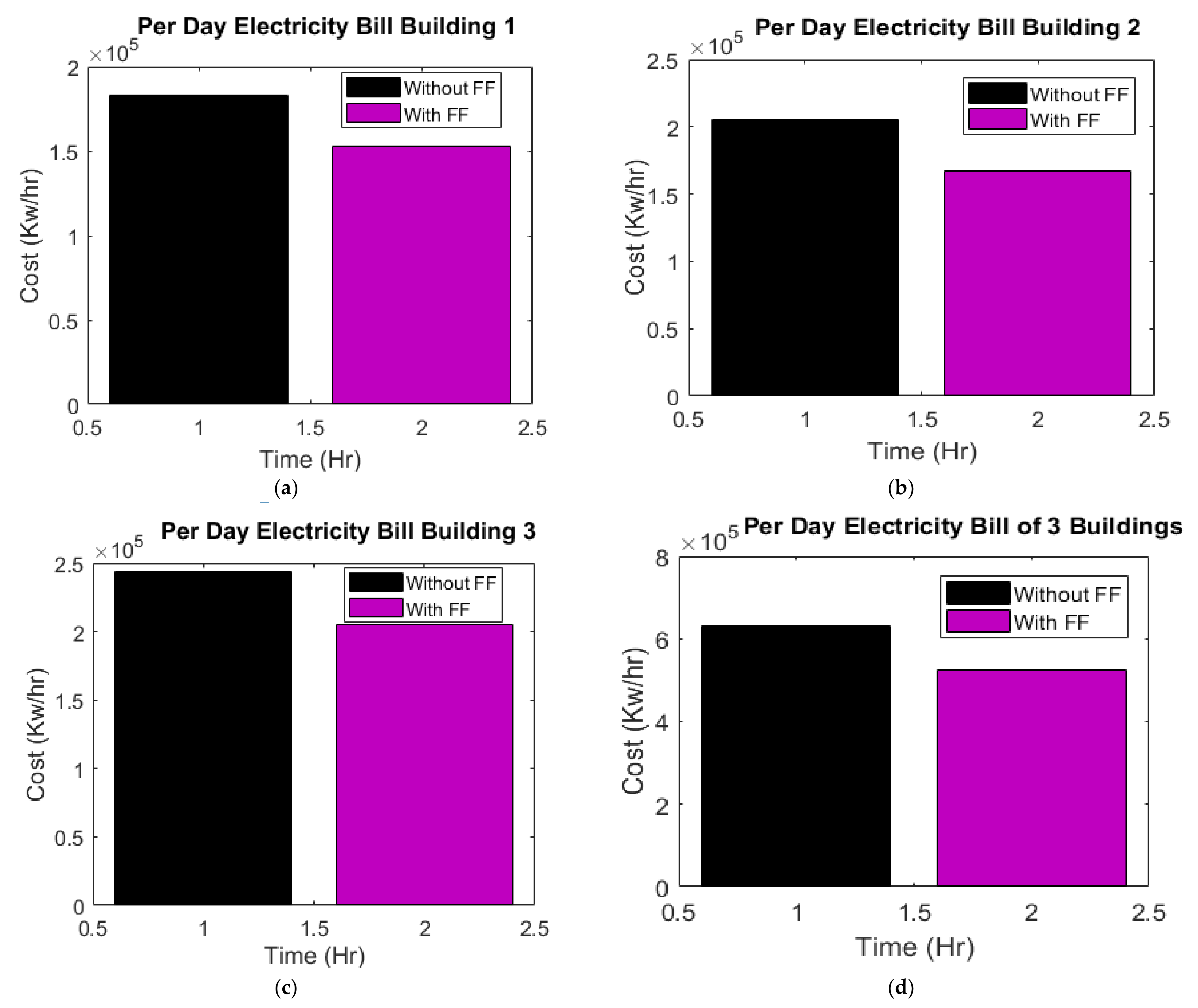
| Work | Key Contribution | AI Approach | FS | Limitations |
|---|---|---|---|---|
| [16] | Price and LF | MFFNN | No | The dynamic variations in load contain high-frequency features, which considerably increases error |
| [27] | PF | ML-based ANN | No | Due to limited feature selections, it lacks statistical data, an optimized model, and demand curves. |
| [21] | Load and Price Forecast | RCGA | Yes | Partial environment for feature selection to minimize the validation error occurred by wrappers |
| [28] | Price and LF | ANN-RNN | Yes | Nominal error rate deficiency occurs in other systems |
| [22] | PF | RNN-KF | No | The implementation of KF in the ANN algorithm relatively rigid than traditional strategies |
| [29] | PF | Bivariate Distribution Scheme | No | A negative correlation factor, the forecasted price of this distribution is less than the marginal distribution |
| [30,31] | Price and LF | ANN-RNN | No | The integration of RBFNN and GRNN have mutual effects which declare some sort of computational errors |
| Proposed Work | PF with a novel Proposed Modified Strategy | ANFIS-SVR | Novel BGA-PCA | A new variety of data input and complex auto-regression methods are not analyzed. |
| Work | Key Contribution | Limitations |
|---|---|---|
| [34] | The techniques of scheduling residential appliances are presented in this study. This study is classified into two techniques such as meta-heuristic techniques and heuristic techniques. | With the widespread use of home appliances, residential consumers need to improve the strategies for scheduling appliances. |
| [3] | This paper presents DSM architecture models and algorithms based on customers behavior and smart appliances integration | Implementations need to be done |
| [5] | Proposes autonomous Game theory DR systems to minimize the cost of power generation. | Game theory can be an alternate to DSM |
| [35] | This study aims to consider the factor of maximizing user comfort, peak-to-average ratio (PAR), and the low cost by considering firefly optimization (FF). | Both algorithms performed a comparative analysis of the separately implemented version to evaluate the process of scheduling devices and improve their performance. |
| [36] | A swarm FA implemented except meta-heuristic algorithm for a cost-effective solution | The algorithm lacks local optimism |
| [33] | Two meta-heuristics techniques FA and EHO is utilized for the scheduling process in a HEMC to maintain the balance between the demand and load side | Due to the integration of two meta-heuristics techniques, but the scheduling rate is low. |
| [37] | A comprehensive overview of the swarm intelligence of FA is performed to express performance capabilities to encourage new researchers and developers to implement it in future works. | The implementation of FA is simple and highly efficient in solving problems. |
| [38] | The scheme used to calculate the electrical cost in this proposed system is CPP using a Meta-heuristic algorithm | HSA perform better than FA in terms of PAR and electricity costs |
| [39] | Applied on different types of appliances in single or multiple homes based on their energy consumption using FA and harmony search algorithm | ToU is used as a pricing signal in the proposed technique for the calculation of the electrical cost |
| [40] | The proposed strategy reduces peak load and the cost by compromising the comfort of the household consumer. Optimization is performed using a multi-objective GA | Decreases the peak load and also reduces the utility bill |
| [41] | This article focuses on maximizing the use of renewable energy resources using different heuristic techniques | Provide consistency in daily profit and low runs. |
| [42] | A concessional and maximum energy consumption schedule uses the GA to reduce and production costs and improve the efficiency factor at the utility and consumer level. | It is used over the single objective, which benefits consumers with intelligent load scheduling |
| [43] | The author compares the performance of the HEMC, and this controller is designed for energy consumption scheduled based on the heuristic algorithm. | The heuristic technique, such as the GA-based energy management controller, performs more efficiently than other heuristic techniques. |
| Sr. No | Model Parameters | Considered Values |
|---|---|---|
| 1. | Population Size | 72 |
| 2. | Selection probability | 1 |
| 3. | Selection Mechanism | Tournament selection |
| 4. | Crossover probability | 0.90 |
| 5. | Mutation Probability | 0.20 |
| 6. | Maximum iteration | 48 |
| 7. | Stopping criteria | 1. When reached max no. of iteration 2. If fitness values are not better than the previous |
| Proposed Algorithm | |
|---|---|
| Step 1: | According to Equations (1)–(13), adjust the Simulation parameters. |
| Step 2: | Compute P(t), , and for different objective functions. |
| Step 3: | Generate random estimation for feedback ANFIS model consists of five stages. |
| Step 4: | Evaluate feature selection with BGA-PCA as per Equation (11) |
| Step 5: | Compute for the different objective function of |
| Step 6: | Compute for 12 months |
| Step 8: | Compute |
| Step 9: | Plot the Figures for MAPE of 12 months |
| Categories | Generation (%) | ||
|---|---|---|---|
| Power Producers | Renewable Energy Resources | 2.79% | |
| Hydro Power Generation | 26.86% | ||
| Gas Production | 16.41% | ||
| RLNG (RNLG) | 4.46% | ||
| Imported Coal | 17.73% | ||
| Local Coal | 0.00% | ||
| Residual fuel oil | 3.09% | ||
| Bagasse | 0.84% | ||
| Uranium | 5.98% | ||
| RNLG New | 21.18% | ||
| Imported Power | 0.34% | ||
| Mix (Captive) | 0.33% | ||
| Months | Capacity Purchase Price (CPP) Per kWh | Power Purchase Price (PPP) Per kWh | Load Demand GWh |
| July 2019 | 4.58 | 9.44 | 14,275 |
| August 2019 | 4.87 | 9.05 | 14,450 |
| September 2019 | 5.93 | 9.74 | 13,230 |
| October 2019 | 7.43 | 11.77 | 10,107 |
| November 2019 | 8.96 | 11.91 | 8306 |
| December 2019 | 8.60 | 12.54 | 8493 |
| January 2020 | 8.24 | 13.86 | 8753 |
| February 2020 | 9.45 | 13.47 | 7686 |
| March 2020 | 7.85 | 12.95 | 9556 |
| April 2020 | 6.84 | 12.94 | 10,974 |
| May 2020 | 5.81 | 11.93 | 12,901 |
| June 2020 | 5.61 | 11.42 | 13,525 |
| Device Type | Hourly Consumption of Device (kW) | Number of Devices | |||
|---|---|---|---|---|---|
| Watts | Start Time | Off Time | Count of Usage in a Day | ||
| Dryer | 500 | 8 | 10 | 1 | 190 |
| Dish Washer | 1000 | 18 | 20 | 4 | 290 |
| Washing Machine | 1000 | 9 | 11 | 1 | 265 |
| Oven | 4000 | 7 | 22 | 8 | 280 |
| Iron | 1200 | 6 | 8 | 2 | 341 |
| Vacuum Cleaner | 1000 | 1 | 4 | 1 | 158 |
| Fan | 500 | 1 | 24 | Continuous | 288 |
| Kettle | 1000 | 5 | 22 | 4 | 406 |
| Toaster | 1000 | 7 | 9 | 2 | 48 |
| Rice-Cooker | 2000 | 10 | 20 | 2 | 59 |
| Hair Dryer | 1500 | 6 | 23 | 2 | 58 |
| Blender | 400 | 8 | 15 | 3 | 66 |
| Frying Pan | 1000 | 12 | 22 | 4 | 101 |
| Coffee Maker | 1500 | 1 | 24 | 10 | 56 |
| Total | 2500 | ||||
| Device Type | Hourly Consumption of Device (kW) | Number Devices | |||
|---|---|---|---|---|---|
| Watts | Start Time | Off Time | Count of Usage in a Day | ||
| Water Heater | 2000 | 1 | 24 | Continuous | 39 |
| Welding Machine | 4000 | 7 | 22 | 20 | 35 |
| Fan/AC | 1000 | 1 | 24 | Continuous | 16 |
| Arc Furnace | 10,000 | 8 | 20 | 30 | 8 |
| Induction Motor | 2000 | 1 | 24 | 20 | 5 |
| DC Motor | 1000 | 1 | 24 | 20 | 6 |
| Total | 109 | ||||
| Device Type | Hourly Consumption of Device (kW) | Number Devices | |||
|---|---|---|---|---|---|
| Watts | Start Time | Off Time | Count of Usage in a Day | ||
| Water Dispenser | 500 | 1 | 24 | 10 | 156 |
| Dryer | 1000 | 8 | 9 | 2 | 117 |
| Kettle | 2000 | 7 | 10 | 5 | 123 |
| Oven | 4000 | 2 | 23 | 10 | 77 |
| Coffee Maker | 2000 | 6 | 14 | 10 | 99 |
| Fan/AC | 1500 | 1 | 24 | Continuous | 93 |
| Air Conditioner | 2000 | 1 | 24 | Continuous | 56 |
| Lights | 300 | 18 | 7 | Continuous | 87 |
| Total | 808 | ||||
Publisher’s Note: MDPI stays neutral with regard to jurisdictional claims in published maps and institutional affiliations. |
© 2021 by the authors. Licensee MDPI, Basel, Switzerland. This article is an open access article distributed under the terms and conditions of the Creative Commons Attribution (CC BY) license (https://creativecommons.org/licenses/by/4.0/).
Share and Cite
Yousaf, A.; Asif, R.M.; Shakir, M.; Rehman, A.U.; Alassery, F.; Hamam, H.; Cheikhrouhou, O. A Novel Machine Learning-Based Price Forecasting for Energy Management Systems. Sustainability 2021, 13, 12693. https://doi.org/10.3390/su132212693
Yousaf A, Asif RM, Shakir M, Rehman AU, Alassery F, Hamam H, Cheikhrouhou O. A Novel Machine Learning-Based Price Forecasting for Energy Management Systems. Sustainability. 2021; 13(22):12693. https://doi.org/10.3390/su132212693
Chicago/Turabian StyleYousaf, Adnan, Rao Muhammad Asif, Mustafa Shakir, Ateeq Ur Rehman, Fawaz Alassery, Habib Hamam, and Omar Cheikhrouhou. 2021. "A Novel Machine Learning-Based Price Forecasting for Energy Management Systems" Sustainability 13, no. 22: 12693. https://doi.org/10.3390/su132212693
APA StyleYousaf, A., Asif, R. M., Shakir, M., Rehman, A. U., Alassery, F., Hamam, H., & Cheikhrouhou, O. (2021). A Novel Machine Learning-Based Price Forecasting for Energy Management Systems. Sustainability, 13(22), 12693. https://doi.org/10.3390/su132212693








